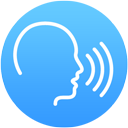









In this introduction you will learn some of the basic traffic rules and most commonly used terms. This will help you understand the rest of the driver's licence theory in the best possible way.
A road for motor vehicles consists of a carriageway with one or several lanes, and sometimes a shoulder (also known as a hard shoulder or verge) outside the carriageway.

A road for motor vehicles consists of a carriageway with one or several lanes, and sometimes a shoulder outside the carriageway
Everyone travelling or staying on a road is considered a road user. Vehicle drivers, passengers, pedestrians, road workers, cyclists, horse riders and skateboarders are all road users when on a road.
A vehicle is a means of transport which is used for transport on the ground and which does not run on rails. This means that airplanes, ships, trains and trams are not considered vehicles.
Examples of vehicles
The safest way to drive is called defensive driving. Driving defensively means that you drive calmly and calculatedly, without taking unnecessary risks, and with an adapted speed. It also means that you drive with good safety margins, have good supervision both forwards and backwards and that you are always ready to act.
By driving defensively you lower the risk of surprising others as well being taken by surprise yourself, which contributes to increased traffic safety.

The safest way to drive is called defensive driving
In short, driving defensively means that you:
If you are driving and encounter several instructions at the same time, the following order of priority applies:
Of all the signals you can encounter while driving, a police officer's signal has the highest priority. It applies before traffic signals, road signs and general traffic rules. If you approach a junction and a police officer signals for you to keep driving, you should keep driving, even if there is a red light and stop sign posted next to the junction.
 A police officer's signal has the highest priority
A police officer's signal has the highest priority
Your speed is crucial to the difficulty level of your driving. With a properly adapted speed, you get more time to plan your driving, your awareness increases and other road users get more time to discover you.
If no speed limit is specified, or if a road sign with a speed limit is destroyed or covered by snow, then the basic speed limit applies.
The basic speed limit is 50 km/h in densely built-up areas and 70 km/h outside of densely built-up areas. On many roads other speed limits apply, but they are then clearly indicated on a road sign or similar device.
Speed limits on road signs always apply until the next road sign with a changed speed limit.
 The basic speed limit in densely built-up areas is 50 km/h
The basic speed limit in densely built-up areas is 50 km/h
The law contains 15 specific situations and places where you must maintain a sufficiently low speed to reduce the risk of accidents. There is no specific speed specified in the law, but you must maintain a speed that is adapted and low enough for the situation or location.
You need to maintain a sufficiently low speed:
The law also prohibits you from driving excessively slowly or suddenly braking without cause. This means you are not allowed to drive too slowly either, if there is no obvious reason to do so, as that could surprise or hinder other drivers.
Below is a table with the maximum speed allowed by different types of vehicles.

|
The following vehicles must follow the speed limit applying to the road: - Private car. |

|
- Heavy bus exceeding 3.5 tons total weight, if all passengers older than three years have access to a seat with a seat belt. |

|
- Heavy bus exceeding 3.5 tons total weight, if all passengers older than three years do not have access to a seat with a seat belt. - Heavy truck (heavy goods vehicle) on motorway or clearway. |

|
- Private car with non-braking trailer whose total weight (or kerb weight when the trailer is not loaded) does not exceed half of the car's kerb weight, maximum 750 kg. - Private car with braking trailer or caravan. - Motorcycle with trailer. - Heavy truck (motorcar category vehicle) with trailer. - Heavy truck (heavy goods vehicle) on roads other than motorway or clearway. |

|
- Motorised equipment (construction equipment) class 1. - Tractor b. |

|
- Class 1 moped. |

|
- Private car with non-braking trailer whose total weight (or kerb weight when the trailer is not loaded) exceeds half of the car's kerb weight. - Tractor a. |

|
- Motorised equipment (construction equipment) class 2. - Towing with other vehicle than tow truck. |

|
- Class 2 moped. |
When deemed necessary some occupational groups have the right to drive at higher speeds than the maximum permitted and infringe certain traffic rules (for example, drive through red lights).
The following occupational groups have this right:
 Police officers have the right to violate the speed limit and certain traffic rules when deemed necessary
Police officers have the right to violate the speed limit and certain traffic rules when deemed necessary
Vehicles designed for a maximum speed of 30, 40 or 45 km/h are called slow-moving vehicles. Slow-moving vehicles must be equipped with an orange-red triangular-shaped sign (known as an LGF sign).
Motorised equipment class 2, tractors class a and three and four-wheeled mopeds class 1 are slow-moving vehicles and must be equipped with this sign.
If you are driving fast and see a vehicle in front of you with a slow-moving vehicle sign, you must expect that you will catch up with the vehicle quickly.
 The tractor in the image is a slow-moving vehicle
The tractor in the image is a slow-moving vehicle
There are several different types of road signs and hundreds of specific road signs. Below is a general description of the most common types.

|
Warning signsGive warning of different types of dangers, indicating you should be extra attentive and careful. Almost all warning signs are triangular with a red border and black motif against a yellow background.
|

|
Priority signsInform about give way and duty to stop rules. All priority signs have different shapes and colours. |

|
Prohibitory signsIndicate that something is prohibited, for example entering a road with a vehicle. As a rule, the prohibition applies from the sign to the next junction. Another road sign or additional panel can also cancel the prohibition. Most prohibitory signs are round with a red border and black motif against a yellow background. |

|
Mandatory signsTell you what you must do, for example drive in a certain direction. As a rule, the mandatory order applies from the sign to the next junction. Another road sign or additional panel can also cancel the mandatory order. Almost all mandatory signs are round with a white border and white motif against a blue background. |

|
Advisory signsTell you about what applies to a particular location, road or road section. For example, that a motorway or pedestrian street begins or ends. Where advisory signs have been put up special traffic rules usually apply. Advisory signs apply until a cancelling sign. Advisory signs are always square or rectangular but do vary in appearance. |

|
Direction signsShows the way to a town, place, establishment, facility or similar. Direction signs vary in shape and appearance. |

|
Additional panelsProvide additional information to the road sign above the panel. Additional panels vary in appearance but usually have the same colours as the road sign they supplement. |
An additional panel with time indications always supplements another road sign and indicates which days and between which times the indication on the road sign applies. They can, for example, tell you when a road sign with a speed limit or a parking prohibition applies.

If the time indication extends over midnight, the time period after midnight applies the following day.
If a certain date or weekday is indicated, the regulation applies on that day regardless of whether the day is a weekday, weekend day or holiday.
The law contains some basic rules of traffic that you as a road user are obliged to follow. Below is a summary of these rules.
1. You must exercise the caution and care required to avoid traffic accidents.
2. You must show consideration for anyone who uses the road or lives next to the road.
3. You must show particular consideration for children, the disabled, the elderly and other persons who are particularly vulnerable in traffic.
4. You must not interfere with or hinder other traffic without cause.
5. You must follow instructions given by police (and other authorities) firstly, traffic signals secondly and road signs thirdly.
6. You must make way for emergency vehicles (police cars, ambulances, fire trucks, etc.) with their sirens or blue lights on.
7. You must not hinder or obstruct a military column, a group of children under the supervision of a leader, a funeral party or any other procession.
8. You must adapt your speed and pay particular attention to whether a train or tram is approaching when passing a level crossing.
 You must always make sure there is no train or tram approaching before you pass a railway or tramway track
You must always make sure there is no train or tram approaching before you pass a railway or tramway track
9. You must not pass a track area if a train or a tram is approaching, if a light signal is red, if an audio signal is sounding, or if a barrier is folding down, is folded down or is folding up, nor if there is a risk that you must stop in the track area.
10. In the event of an accident, you must remain at the scene of the accident, even if you were not responsible for the accident, and help injured persons to the best of your ability. You must also state your name and address and provide information about the incident if any of the persons involved in the accident ask for it.
11. In the event of an accident, you must immediately move any vehicle that may be a danger or obstacle to traffic. However, if someone has died or been severely injured, the vehicle may only be moved if it poses a danger to other traffic.
12. In the event of an accident, you must not erase tracks that may be of importance for the investigation of the accident.
13. In the event of an accident where someone else's property has been damaged, and no one is present to take your information, you must contact the owner of the property you have damaged. If that is not possible you must contact the police immediately.
14. You must not move or dislodge traffic devices. If you do you must immediately restore the device or, if that is not possible, notify the police or the installer of the device.
 If you dislodge a traffic device you should first try to restore it yourself
If you dislodge a traffic device you should first try to restore it yourself
15. You must not leave anything on the road that can cause danger or in any way hinder the traffic. If you do you must remove it immediately or, if that is not possible, mark the item until you remove it.
The basic rules of traffic contain nothing about your rights – only your obligations. The rules are designed that way to emphasise how important it is to be cautious and careful when driving.
All the basic traffic rules are dealt with in more detail in the other chapters of the driving license theory.